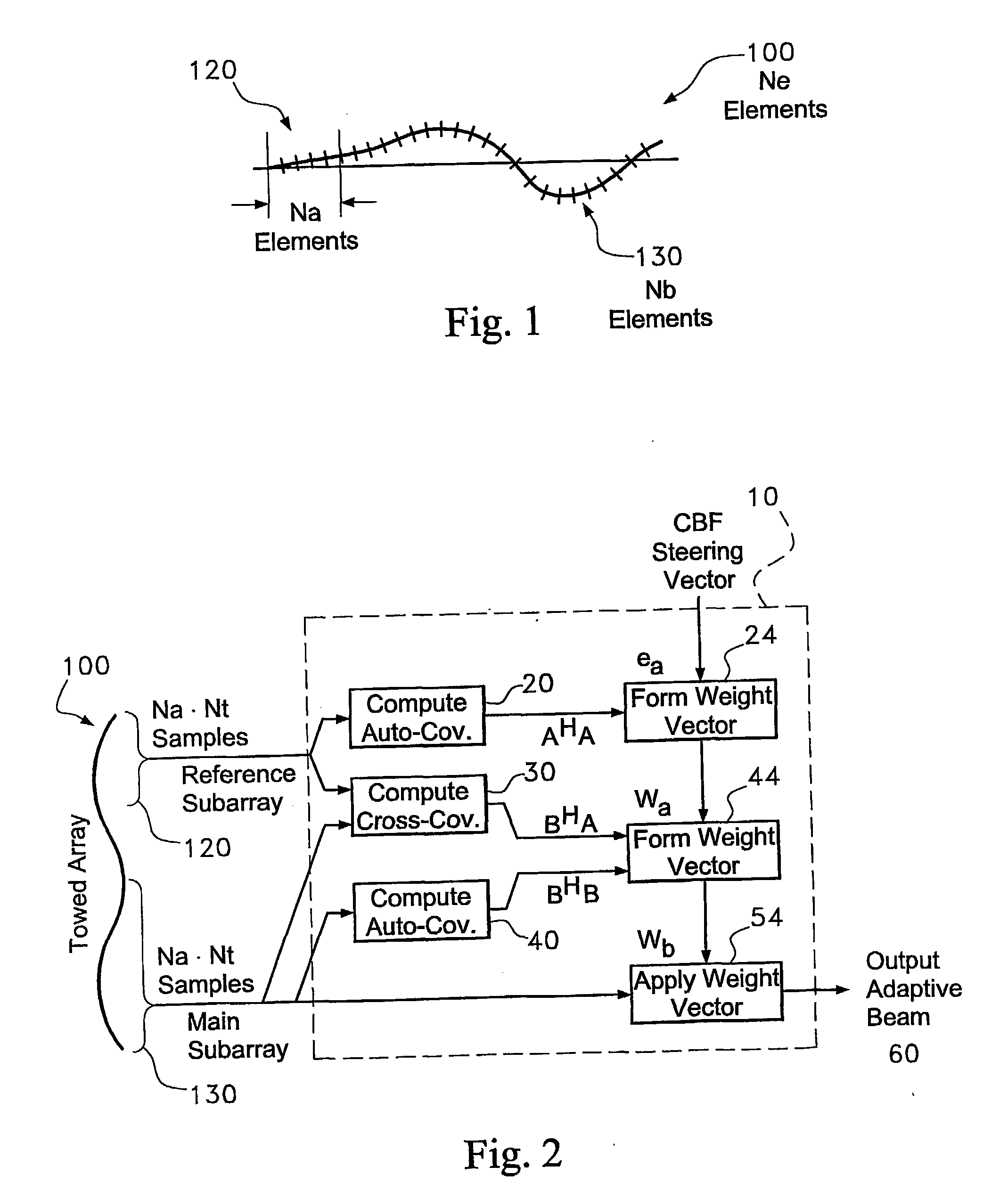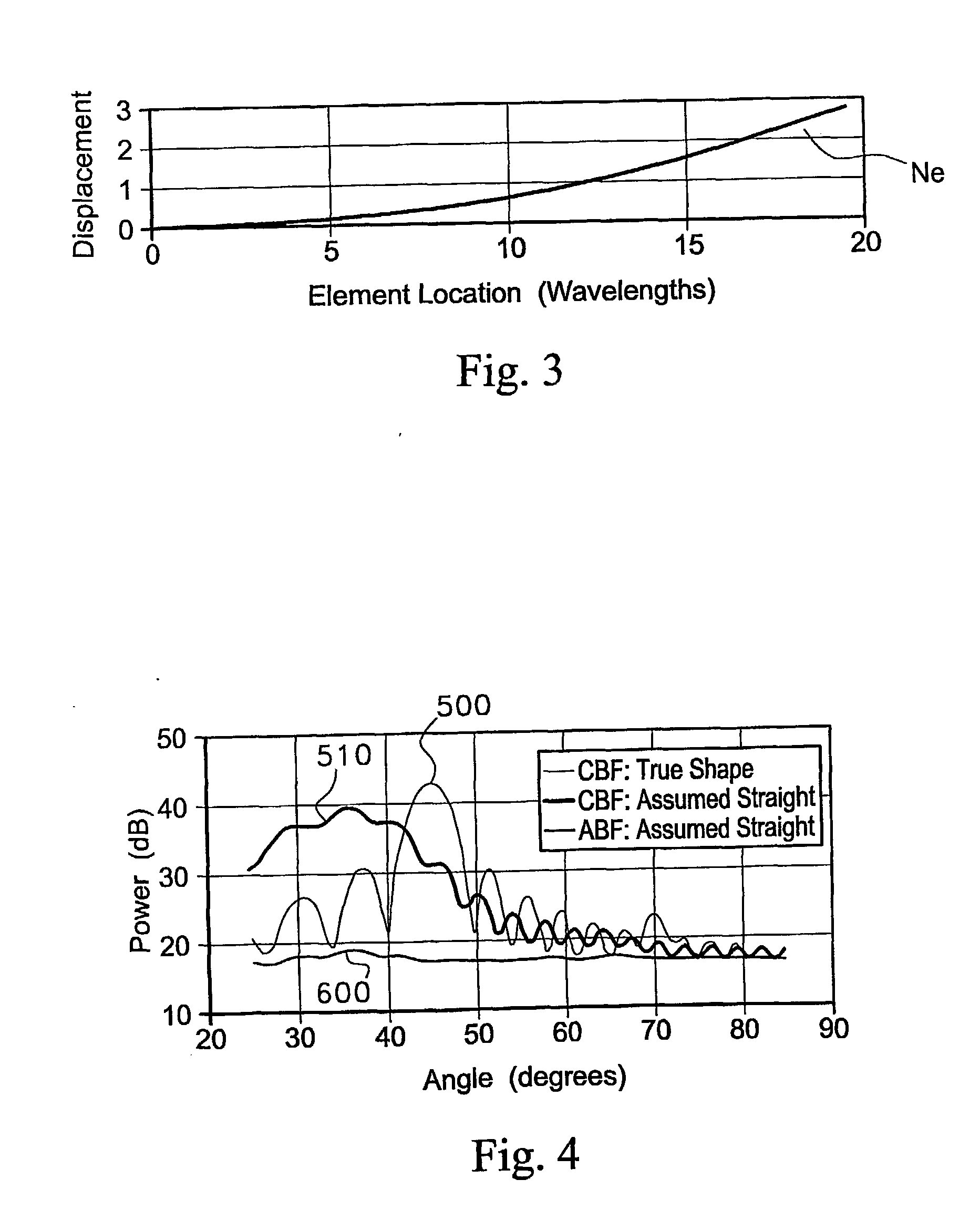Subarray matching beamformer apparatus and method
a beamformer and subarray technology, applied in direction/deviation determination systems, instruments, using reradiation, etc., can solve problems such as difficult implementation of models that estimate array shape based on course maneuvers, distortion of towed arrays, and impaired target tracking and focus
- Summary
- Abstract
- Description
- Claims
- Application Information
AI Technical Summary
Problems solved by technology
Method used
Image
Examples
Embodiment Construction
[0017] The method and system of the present invention allows for beamforming an array of unknown shape. To steer the array towards a particular direction, a processor first computes the standard adaptive weight vector across a subarray chosen small enough to assume negligible loss due to the distorted shape. Next, by utilizing the cross-covariance between this small subarray and the remaining elements of the array, the processor maps the short vector to a lengthened one which serves as an estimate of the steering weights for the main portion of the array. Note that this lengthened weight vector is obtained absent any information about the location of the array elements.
[0018] Referring now to the drawings, and in particular to FIGS. 1 and 2, wherein like reference numerals are used to indicate like parts, there is shown an apparatus 10 embodied in a sonar system for deriving adaptive weights for processing acoustic data received from an array 100 of hydrophones.
[0019] As shown in ...
PUM
 Login to View More
Login to View More Abstract
Description
Claims
Application Information
 Login to View More
Login to View More - R&D
- Intellectual Property
- Life Sciences
- Materials
- Tech Scout
- Unparalleled Data Quality
- Higher Quality Content
- 60% Fewer Hallucinations
Browse by: Latest US Patents, China's latest patents, Technical Efficacy Thesaurus, Application Domain, Technology Topic, Popular Technical Reports.
© 2025 PatSnap. All rights reserved.Legal|Privacy policy|Modern Slavery Act Transparency Statement|Sitemap|About US| Contact US: help@patsnap.com



